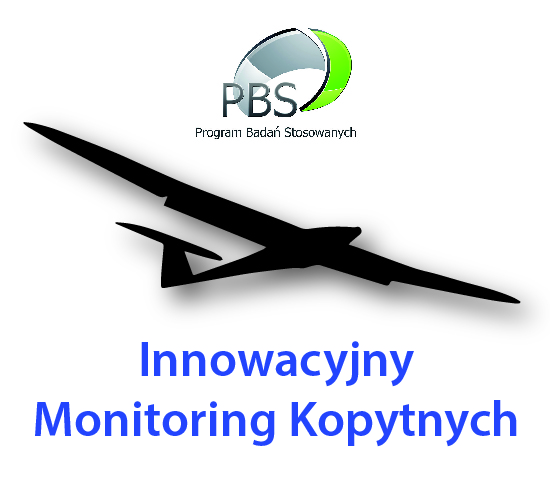|
The papers dealing with the same specific problem or research project may be published under the common title as a special issue (at least 15 papers filling up the whole volume) or special section (5-7 papers published inside a normal issue). However, the individual papers included into the special issue or special section should be prepared as the regular research papers or short contributions (see Instructions and information for authors). The guest editor(-s) is responsible for the scientific level of the given set of papers as well as is obliged to formulate an introduction (preface).
The submission of papers aimed to be published as a special issue or special section of POLISH JOURNAL OF ECOLOGY requires the previous consultation with Editors.
The volumes of POLISH JOURNAL OF ECOLOGY containing the special issue or special section can be obtained directly from Library of Centre for Ecological Research, Polish Academy of Sciences (see Address andSubscription).
The following special issues/sections of POLISH JOURNAL OF ECOLOGY were published in last years:
1. Long-term effect of liming in a humic lake (editor: A. Hillbricht-Ilkowska) - Pol. J. Ecol. 1998, 46(4): 345-415.
The long-term effects (for 20 years) of liming of previously slightly acid, low-calcium, humic, mid-forest lake (Lake Flosek on Masurian Lakeland) were assessed. The higher Ca content, neutral pH, high transparency and low algae biomass were noted permanently. The direct effects on biodiversity and indirect effects (via food availability and predation) on food web structure and lake ecosystem functioning were recognized. The problem of moderate liming of naturally acid humic lakes was raised up as the way of their protection against further acidification and in supporting their oligotrophic character and unique biodiversity.
2. Effect of industrial pollution and spruce decline on the biocenoses of Karkonosze Mts. (South-Western Poland) (guest editor: E. Dąbrowska-Prot) - Pol. J. Ecol. 1999, 47(4): 365-476.
Response of soil conditions, herb-layer vegetation and invertebrate communities (spiders, entomofauna) in montainous spruce forest affected by air pollution.
3. Biomanipulation of macroarthropods - effect on food web in grass ecosystem (guest editor: A. Kajak) - Pol. J. Ecol. 2000, 48(4): 261-360.
Seven papers on the effect of macroarthropods (mainly predatory) on the decomposition rate of grass litter in a field experiment. It was found that macroarthropods increase the organic carbon and humic acids storage in soil. Possible mechanisms of their contribution to decomposition pattern are considered.
4. Bank vole biology: recent advances in the population biology of a model species (guest editors: G. Bujalska and L. Hansson ) - Pol. J. Ecol. 2000, 48 (Suppl.): 1-256.
The volume contains 18 papers dealing with different aspects of biology and ecology of Clethrionomys glareoluslike: the individual characteristics of animals and their geographical variation, local populations and their dynamics and the dynamics over large spatial scales.
5. Upper Vistula River: response of aquatic communities to pollution and impoundment (guest editors: R. Żurek and H. Kasza) - Pol. J. Ecol. 2002, 50(2): 105-266.
The volume contains 11 papers on the effect of pollution and management of Upper Vistula on selected aquatic communities.
6. Catchment impact on lakes: long-term studies of the river-lake system in diversified landscape (editor: A. Hillbricht-Ilkowska) - Pol. J. Ecol. 2002, 50(4): 407-554.
The issue contains 9 papers on the landscape structure (air photos), seasonal and long-term export rates of nutrients from lake watersheds, nutrient loading and retention in lakes, eutrophication rate of lakes as well as the floristic and functional analysis of wetland zones along lakes and wetland patches as the barrier systems. The river-lake system of r. Jorka on Masurian Lakeland (Poland) was the main study area. The review paper on the links between landscape, catchment basin, wetland and lake was presented as well as the synthesis paper on the results and conclusions of the above studies.
7. Patterns and processes in freshwater ecotones: perspectives and case studies (guest editors: S. Radwan, J.I. Rybak, T. Węgleńska) - Pol. J. Ecol. 2003, 51(1): 109 - 250.
The volume contains 15 papers dealing with lacustrine ecotones i.e. the wetland patches and littoral zones connected with lakes and lakeland areas. The diversity and dynamics of vegetation and invertebrate communities (benthos, plankton, psammon) in littoral of different lakes were assessed as well as the nutrients, heavy metals and organic compounds concentration in land-lake ecotone. Long-term changes in the ecotone network as well as the effects of their restoration were described. The biogeochemical role of wetland patches in lakeland area was specified. A river-lake system was considered as the pattern of landscape patches and their ecotones.
8. Patterns of pine ecosystem response to climate on a boreal-temperate transect (guest editors: A. Breymeyer and D. Reed) - Pol. J. Ecol. 2003, 51(4): 399-559.
The results of international research project on the effects of North - South latitudinal (N70o08', E24o47' - N50o28', E22o59') climate changes on the diversity and functioning of pine forest ecosystem were presented in 15 papers dealing with: growth of pine trees and the history of pine stands reconstructed from radial growth, genesis and actual soil properties of pine forest, annual wood production and biomass, herb layer and epiphytic lichens diversity, litter fall rate and decomposition rate, organic carbon pool and storage as well as the species richness and carbon storage in ground vegetation. The pine stands were studied on 10 plots distributed from Northern Norway to Southern Poland.
9. Impact of midfield shelterbelts on agricultural landscape (guest editors: A. Kajak, J. Karg, L. Ryszkowski): soil processes and litter decomposition (Pol. J. Ecol. 2003, 51:269-322); soil invertebrate communities (Pol. J. Ecol. 2004, 52: 99-180); succesion and biotic changes related to shelterbelt development(Pol. J. Ecol. 2004, 52: 391-460).
The collection of 17 research papers published in three special sections and presenting the results of the landscape ecology project performed in the lowland, arable area (Turew region, West Poland) where in twenties of XIX century the shelterbelts were introduced and where they are planted nowadays also. The impact of old and newly planted shelterbelts on the ecological processes in adjacent cereal fields (decomposition of organic matter, carbon accumulation in soil, microbial activities), succession and diversity of vegetation, changes in density, biomass and diversity of different invertebrate (nematodes, enchytraeids, lumbricids, microarthropods, insect larvae, carabids, spiders , and others) and vertebrate communities (avifauna, small mammals). The comparison between shelterbelts of different age, their ecotones and adjoining fields was made in respect to the functioning and structure of the ecosystem and biocenosis.
10. Studies on population ecology of European dormice (Gliridae, Rodentia) (guest editors: M. Sciński and P.A. Morris) - Pol. J. Ecol. 2006, 54: 335-402.
A collection of 9 papers presented on 6th International Conference of Dormice (Gliridae) (Siedlce, Poland, September 2005) and dealing with population dynamics and activity, use of space and distribution, food habits, nesting and home ranges as well as the research methodology of European species of dormice.
11. Advances in European Freshwater Sciences, 2005 (guest editors: Z.M. Gliwicz, G. Mazurkiewicz-Boron, K. Rouen) - Pol. J. Ecol. 54: 519-723.
A collection of state-of-art review papers presented as invited lectures as well as the papers given by prize- winning students on 4th Symposium for European Freshwater Sciences (August 2005, Krakow, Poland). The papers are dealing with the problems crucial for recent freshwater ecology like: biodiversity and bioinvasions, life history strategies, herbivory versus predatory mode of life, adaptations to food stress, predator impact and unfavorable habitats, dynamics of aquatic systems (including the riparian ecosystems), use of stable isotope analyses and others.
12. Interspecific relationships on different levels of biological organization: vascular plants and the 'minor brothers' (guest editor: B. Czarnecka) - Pol. J. Ecol. 2010, 58(4): 617-644.
The section contains three papers presented on the Scientific Conference Interspecific relationships on different levels of biological organization: individual - population - biocoenosis. Vascular plants and the 'minor brothers' (June 2009, Krasnobród, Poland) which was organized by the Plant Population Biology Section of the Committee of Ecology at the Polish Academy of Sciences. The papers refer to relationships between vascular plants and other groups of organisms (endophytic and mycorrhizal fungi, bryophytes), which are named 'minor brothers' for simplification.
13. Vascular plants of the mountain element in the Polish Lowlands: from a regional to individual level(guest editor: B. Czarnecka) - Pol. J. Ecol. 2011, 59(2): 217-288.
A set of five papers presented on the All-Poland Conference Interspecific relationships on different levels of biological organization: individual - population - biocoenosis. Vascular plants and the 'minor brothers' (June 2009, Krasnobród, Poland). The papers are dealing with the current problems of species richness, distribution patterns and habitat requirements of mountain vascular plants occurring in the lowlands at the limit of their geographical range, similarities and differences between plants from mountain and lowland populations, as well as the genetic structure of the isolated lowland populations.
|
 Unia Europejska
Unia Europejska







